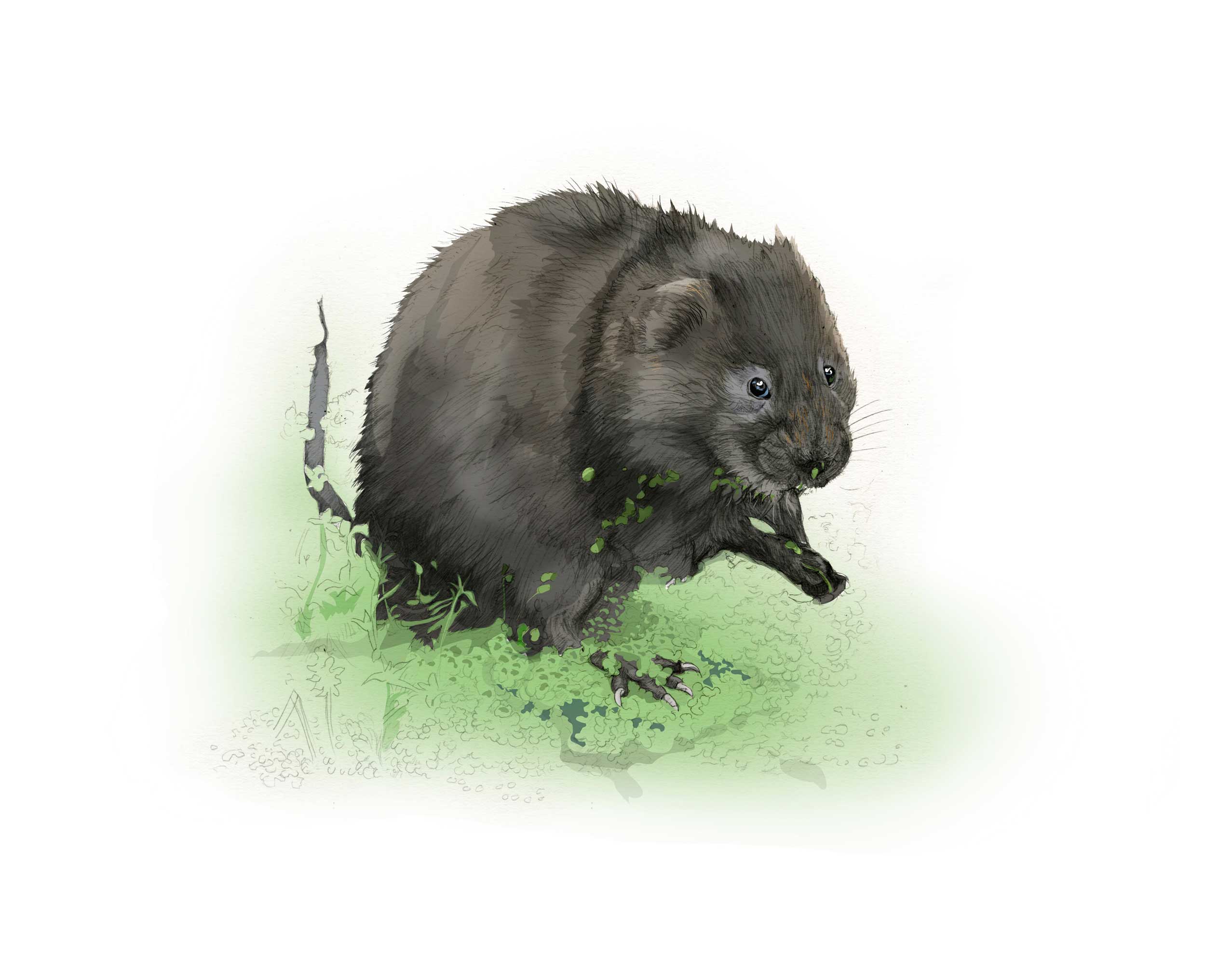
Arvicola amphibius
Water voles live along the banks of slow-moving rivers, ditches and lakes. They prefer banks with plenty of vegetation and a variety of different kinds of plants growing along the water’s edge.
Water voles are small, furry rodents with chestnut-brown fur, a long tail covered with hair and short rounded ears. They are bigger than other voles and with a body length of about 20cm they are big enough to be mistaken for a brown rat. Water voles, however, have a blunt nose, while rats have a more pointed nose. Ratty in Wind in the Willows is not actually a rat at all, but a water vole. Water voles spend a lot of time in and around fresh water. A sign that they are about is a ‘plop’ as they dive into the water or a small circle of grazed vegetation around a burrow entrance. They also leave their tracks in the mud as they go scampering along the riverbank.
Water voles are aquatic rodents – they are active day and night, and spend a lot of time swimming. They have very thick fur with air trapped in it which keeps them warm when they are in the water, and flaps of skin inside their ears to keep the water out. They are almost entirely vegetarian and eat grasses and other waterside plants in summer and fruits, roots and bulbs in winter. Sometimes they store roots for the winter months. Water voles shelter and build nests by burrowing into steep riverbanks. They construct sleeping chambers and nesting places on several levels so that if the water level rises they can move upwards and stay dry. They often make an underwater entrance providing a quick escape if they are attacked. Water voles can have three or four litters of young a year, starting in March or April. There are normally about five young in a litter. Young leave the nest when they are half grown but only about a third survive to be adults and few live for more than two winters.
Water voles have become extremely rare in many areas of Britain, including the North York Moors. The National Park Authority is carrying out work to enhance their habitats in an attempt to reverse the decline – read about the work here.